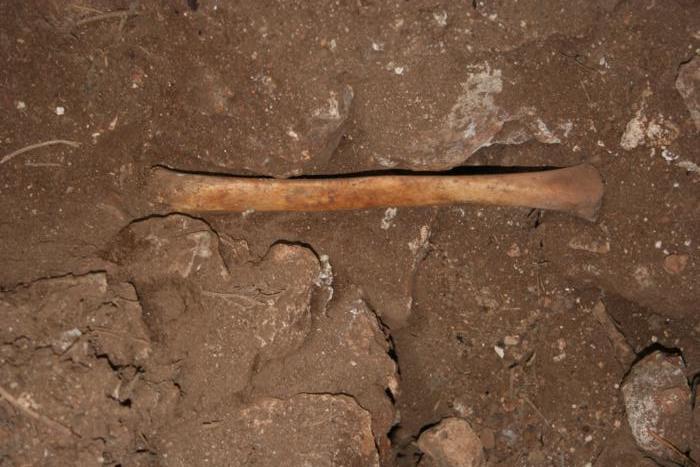Cup made from ancient human skull discovered in Spanish cave
Scientists also find shin bone that appears to have been modified as a tool
Your support helps us to tell the story
From reproductive rights to climate change to Big Tech, The Independent is on the ground when the story is developing. Whether it's investigating the financials of Elon Musk's pro-Trump PAC or producing our latest documentary, 'The A Word', which shines a light on the American women fighting for reproductive rights, we know how important it is to parse out the facts from the messaging.
At such a critical moment in US history, we need reporters on the ground. Your donation allows us to keep sending journalists to speak to both sides of the story.
The Independent is trusted by Americans across the entire political spectrum. And unlike many other quality news outlets, we choose not to lock Americans out of our reporting and analysis with paywalls. We believe quality journalism should be available to everyone, paid for by those who can afford it.
Your support makes all the difference.A number of ancient human skeletons have been unearthed by archaeologists from a cave in Spain, including one modified as a cranial “skull cup”.
Some of the skeletons found were modified into tools, including the cup.
The intentional post-mortem modifications of the bones found in the cave date back to about 5th to the 2nd millennium BCE, according to the researchers, including those from Spain and Switzerland.
The study, published on Wednesday in the journal PloS One, suggests caves have been sites for burial and later modification for thousands of years in the Iberian Peninsula.
While previous research has established the use of caves as burial sites as a cultural phenomenon, the meaning behind the manipulation of buried human remains has remained unclear.
This practice became particularly common in the southern Iberian Peninsula starting around the 4th millennium BCE.
Numerous skeletal remains unearthed at Cueva de los Marmoles in southern Spain and belonging to at least 12 individuals were assessed by researchers, including Rafael Martínez Sánchez from Universidad de Córdoba in Spain and those from the University of Bern.
They used radiocarbon dating to determine the individual burials date back to the 5th and 2nd millennium BCE.
The study also documented intentional post-mortem modifications to the bones.
These included fractures and scrapes that might have resulted from efforts to extract marrow and other tissues.
“Anthropic traces on the remains – fresh fractures, marrow canal modifications, and scraping marks – hint at their intentional fragmentation, cleaning from residual soft tissues, and in some cases reutilization,” scientists wrote in the study.

Among these remains, archaeologists also found a tibia – shin bone – that appears to have been modified for use as a tool.
Researchers also found a cranium “skull cup” they suspect may have been similarly modified for some dietary or practical use.
“The repeated pattern, distribution on the cranial vault, and shallow depth of the scraping marks on the ‘skull cup’ indicate an attempt to clean the cranium from residual soft tissues by means of repeated scrapings and the application of a relatively low force,” archaeologists noted.
The findings are consistent with other cave sites in the southern Iberian Peninsula, representing a widespread practice of buried human remains being later modified and utilised for food and tools, said scientists.
“These data align with those from other cave contexts from the same geographic region, suggesting the presence, especially during the Neolithic period, of shared ideologies centered on the human body,” they wrote.
They suggest there could also be further symbolic purposes of these modifications that may become clearer with further study.




Join our commenting forum
Join thought-provoking conversations, follow other Independent readers and see their replies
Comments